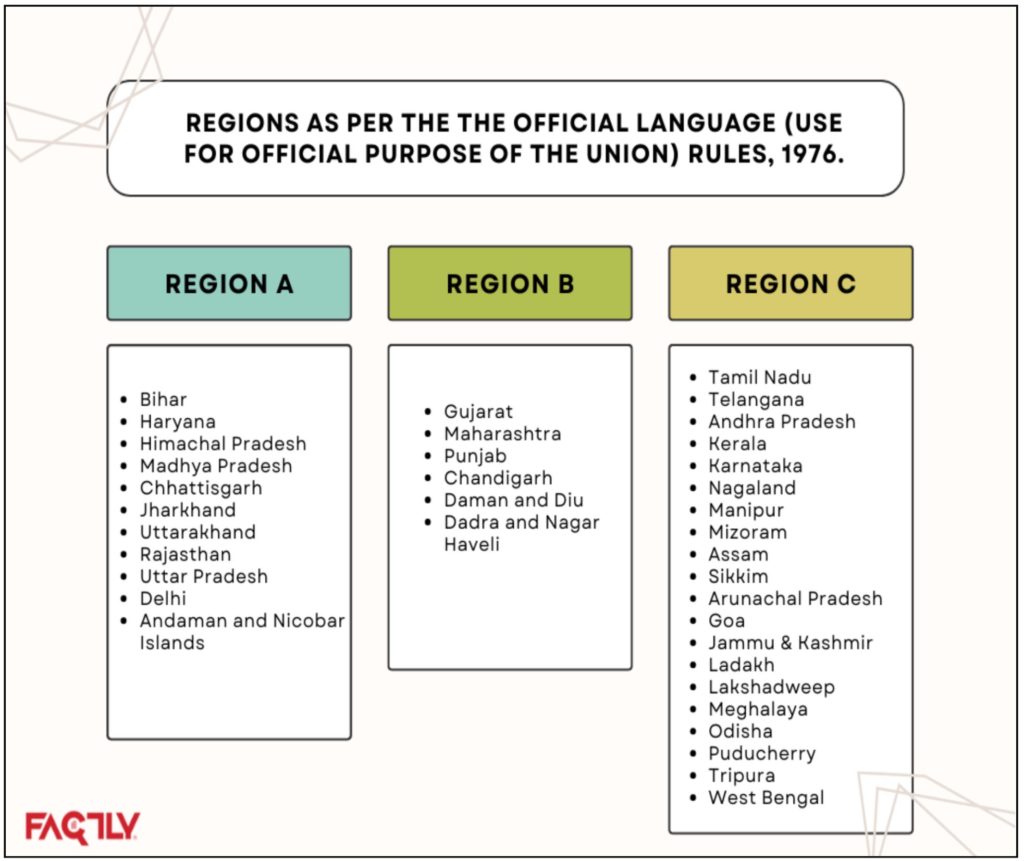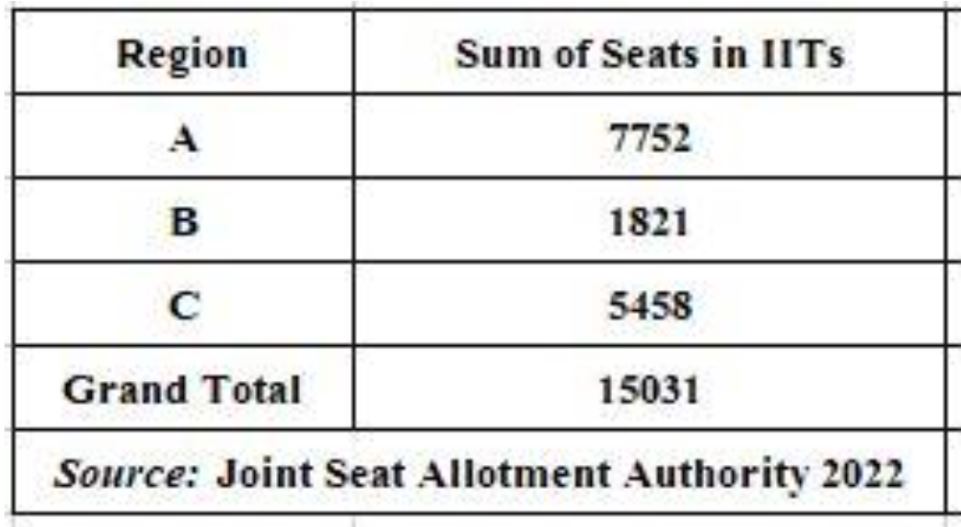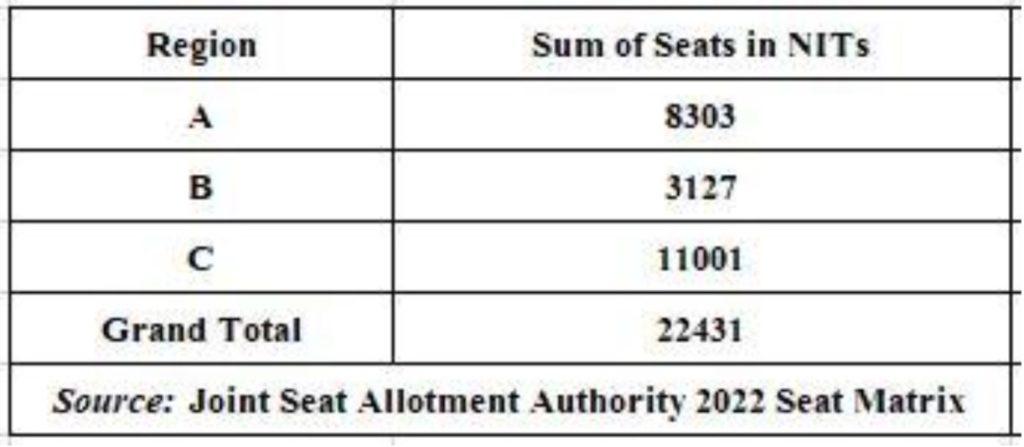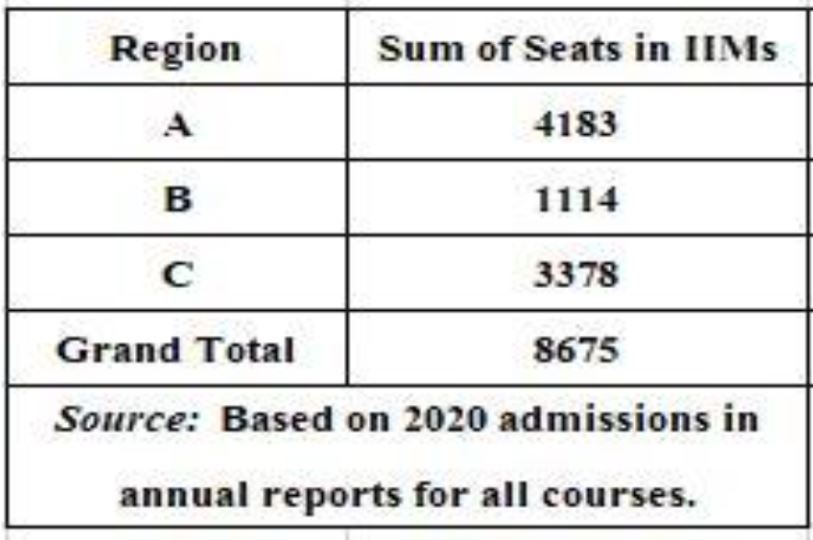Media reports on the eleventh report of the Committee of Parliament on Official Languages that allegedly suggested prioritizing native or regional languages as a medium of instruction in IITs, IIMs and other central institutions has triggered a war of words. But how do the numbers stack up in terms of the Distribution of IIT, IIM & NIT Seats in Regions A, B & C in Terms of ‘Official Language Rules, 1976’.
There was criticism following media reports about the eleventh report of the Committee of Parliament on Official Languages, headed by Home Minister, which allegedly suggested prioritizing native or regional languages over English across the nation. Critics called it ‘Linguistic Imperialism,’ accusing the government of engaging in ‘Language wars.’ While the debates over language may not be entirely new, the atmosphere and context under which the current debates are taking place are completely distinct. Things have become much polarized, for people exhibiting any resistance towards imposition are often termed as ‘linguistically intolerant’.
This article does not intend to get into the debate on the linguistic imposition but would rather examine the potential practical implications of such steps if any. It must be noted that the report of the committee in question is not available in the public domain.
The Languages recognized by the Constitution
For starters, the Eighth Schedule of Indian Constitution lists out twenty-two languages, including Hindi. There are demands for including 38 more languages to this list. The Pahwa Committee in 1996, and the Sita Kant Mohapatra Committee in 2003, failed to derive any set criteria for the inclusion of languages to the scheduled list. Inclusion of any language into this schedule is considered a guarantee of state patronage, and efforts shall be made to preserve the identity of the language.
Any debate on language imposition must not forget the context in which it operates, and the history, and socio-economic and political conditions surrounding it. The imposition of language in India dates to the independence days, and the creation of linguistically majority states. However, as mentioned above, tracing history, and elaborating it here is not appropriate, as much had been written earlier including reports official commissions.
Hindi and English in India
The 2011 Language Atlas of census estimates that Hindi speakers comprise 43.63% of the total country’s population. However, four major states, Uttar Pradesh (35.58%), Bihar (15.27%), Madhya Pradesh (12.17%), and Rajasthan (11.60%) accounted for three-fourths of the total Hindi speakers of the country.
As per 2011 census, the number of English speakers account for 0.02% of country’s total population, and Maharashtra (41.07%), Tamil Nadu (9.43%), Karnataka (8.94%), West Bengal (5.76%), Rajasthan (5.08%), Uttar Pradesh (5.04%), and Andhra Pradesh (5.03%) account for more than 80% of the total English speakers in India. The number of bilinguals (having English as first subsidiary language) and trilinguals (English as second subsidiary language) is highest among Hindi speakers, followed by Marathi, Telugu, Tamil, and Bengali speakers.

Similarly, the total number of bilinguals and trilinguals with Hindi as their first and second subsidiary language comes to around 31.5 Crore, which is approximately one-fourth of the total population. It is notable that Hindi is one of the major languages in twenty-six out of thirty-six States and Union Territories.

Are there rules governing communication between Union & State Governments?
The Official Language (Use for Official Purpose of the Union) Rules, 1976 lay down the process to be followed for central government to communicate with other governments or organizations. In view of the diversity of languages in India, and the various official languages used by the states, a need was identified to differentiate the nature of communication. Accordingly, all the states have been categorised into 3 different regions.
- Region A: Comprises of the states belonging to the Hindi Heartland, which have Hindi as their official language. (Bihar, Haryana, Himachal Pradesh, Madhya Pradesh, Chhattisgarh, Jharkhand, Uttarakhand, Rajasthan, Uttar Pradesh along with the Union Territories – Delhi and Andaman & Nicobar Islands).
- Region B: Comprises the states of Gujarat, Maharashtra, Punjab and the Union Territories of Chandigarh, Diu & Daman, Dadra & Nagar Haveli)
- Region C: All the other states which do not fall under the above two categories. These States do not have Hindi as their official language. This includes all the southern states, Odisha, West Bengal etc.

Few important guidelines for communication of central government with the states in these three regions is as follows.
With Region A: All the official communication between the Central departments and the State departments of the respective states needs to be in Hindi. In case there is any official communication made in English, it ought to be accompanied by a translation in Hindi.
With Region B: The communication between the Centre and any department of the state would be in Hindi. If there is any communication in English, a translation in Hindi needs to be accompanied. In case, the communication needs to be sent in a local language, there is also a provision to send a translation in that local language along with the communication in Hindi or English. Any communication which is sent to a person can be in Hindi or English.
With Region C: All the communication which between the Centre and the state is carried out in English. Even communication with a person in this region will also be done in English. Tamil Nadu is not included in these rules and all communication with Tamil Nadu is carried only in English
Below is the illustration of the language of communication between various entities.
| Between | State Govt. in Region A | State Govt. in Region B | State Govt. in Region C |
| Central Government | – Hindi – English (with translation in Hindi) | – Hindi – English (with translation in Hindi) -Hindi/English to an individual person – Attached translation in other language | – English |
You can read more about these rules in this explainer from Factly.
What about these rules in the current debate?
As noted above, though the official languages of the Union Government are Hindi & English, there are differences in the way the union government communicates with the states, especially the states in ‘Region C’ where all communication happens in English. The current language debate around medium of instruction needs to be looked at in this context. If Hindi becomes the default medium of instruction, how will it affect those from Region C states, and if the local language becomes of the medium of instruction in Region C states, how will it affect those from Region A states.
Estimating the potential consequences of teaching in native languages
- The institutions chosen for this study are those that offer a platform for inter-regional diversity.
- IITs, NITs and IIMs across India are considered for analysis.
For arriving at the potential consequences of turning to native language as a medium of teaching/instruction in technical and non-technical institutions, the seat share, and the region wise presence of premier institutions in India is developed. Tamil Nadu is included in Region C for the purpose of the analysis.
Region wise share of seats in IITs
Out of the total 15031 seats, more than 63% of the seats are in states of regions A and B. Population wise also, these states account for more than 60% of the Indian population.

Region wise share of seats in NITs
The region wise seat share of NITs is as below. Out of the total seats in NITs, half of the seats are reserved for domiciles of the state. Hence, for calculation purposes, only half of the seats shall be considered. Even if half seats are considered, it would affect those that do not have a majority Hindi speaking population.
Out of the total 22431 seats, approximately 50% belong to regions A and B. As mentioned, already half of the seats go to the domicile of the state, and the local language as the medium of instruction might act as impediment for other domicile students to compete for the remaining half.

Region wise share of seats in IIMs
Similarly, the region wise share of seats in IIMs is as below.
All states do not have an IIM. There are only 20 IIMs in India. Out of the total 8750 seats throughout India, more than 60% of the seats fall in regions A and B.

Almost 60% of the seats of IIMs and IITs fall in Region A and Region B areas, which are in the Northern, Central and Western Regions of India. For students from the Southern region, and North-Eastern States, such a large seat share in Region A and Region B states might potentially make it difficult for them choose institutions in these states if the medium of instruction is only Hindi. The same would be true for students from Region A though to a lesser extent if the medium of instruction in Region C states becomes the local language.
What does this mean?
While encouraging native languages is laudable & necessary, the introduction of these as a medium of instruction at the graduation level needs deeper & comprehensive research. It is common knowledge that knowledge of English played a major role in India’s economic progress post 1991 in terms of opportunities it provided to people.
Very rarely discussed in this whole debate the idea of ‘incentive’. People tend to learn new languages if there is an incentive attached to it- either economic or social. Propagation of any language, if needed, must be followed by adequate incentives, and sufficient structural changes to the existing systems to accommodate new challenges.


